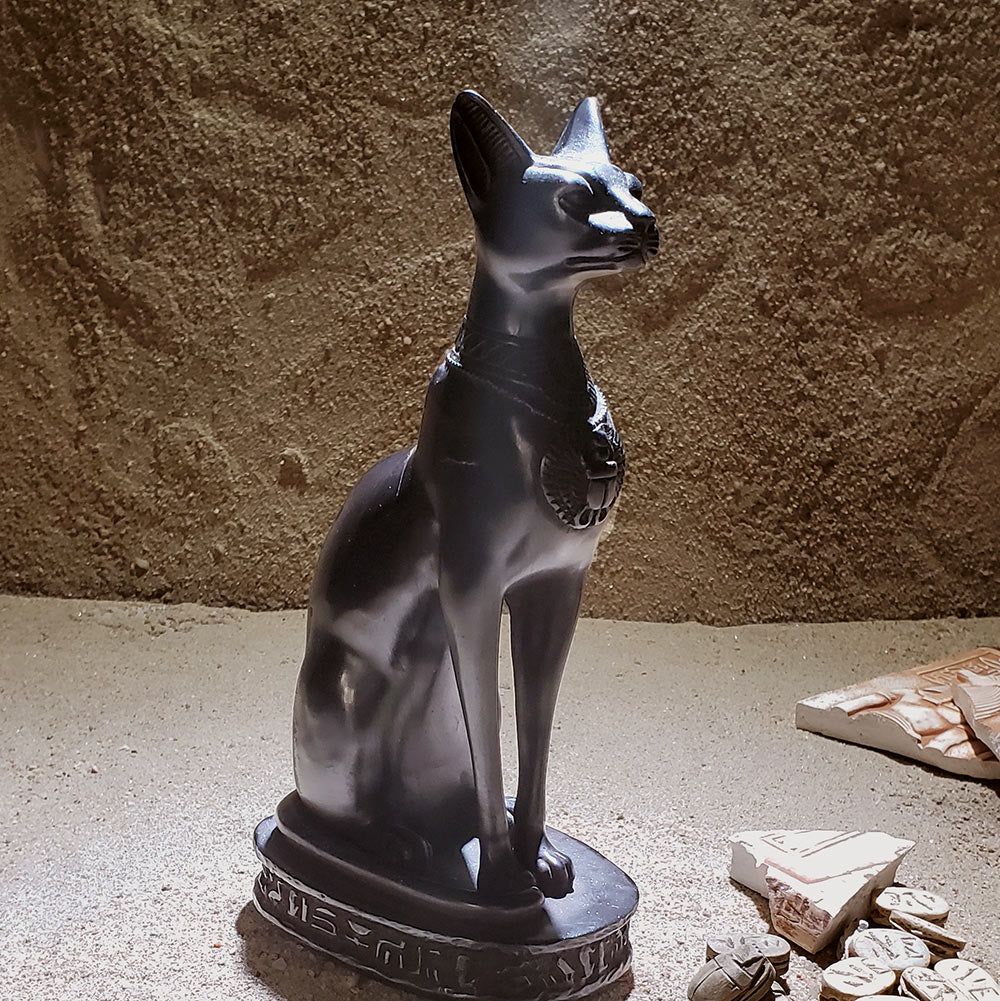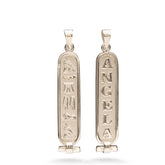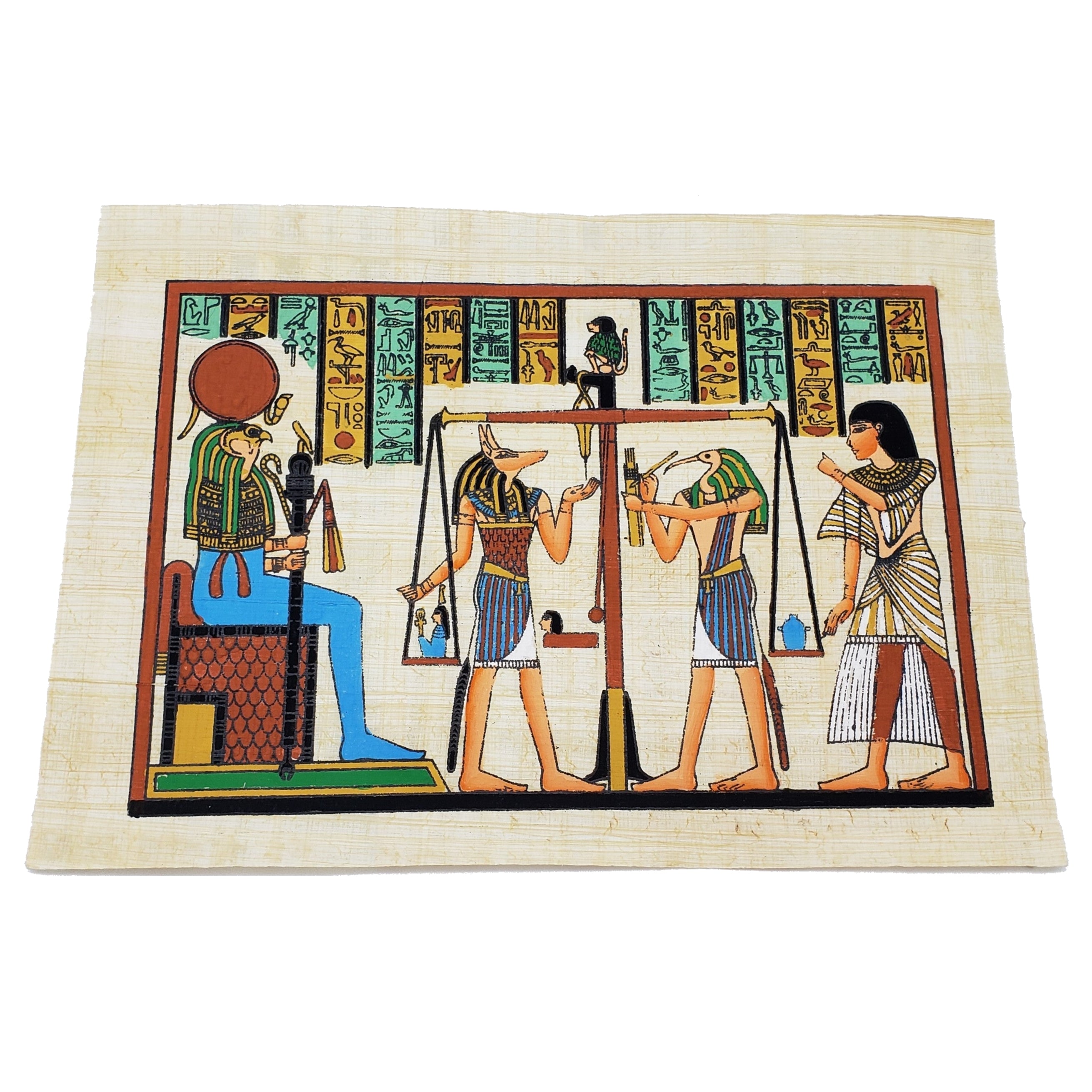



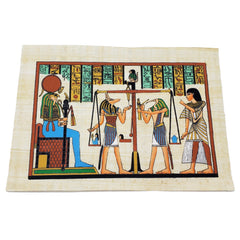

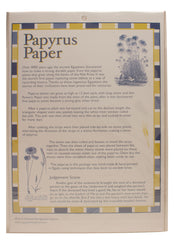
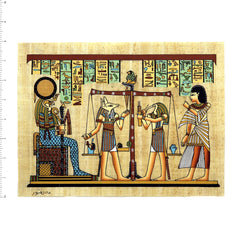
Egyptian Papyrus Painting Judgement Scene - Made in Egypt
- $ 17.00
- $ 17.00
- Unit price
- per
This beautiful painting is a replica of an illustration from the Egyptian Book of the Dead. Each piece is hand painted on genuine papyrus paper in Cairo, Egypt! It will come individually sealed in a poly bag with a hole punched at the top. Information on the paper and the scene is inserted in the back of the packaging. To the ancient Egyptians, the judgment of the dead was the process that allowed the Egyptian gods to judge the worthiness of the souls of the deceased. After confirming that they were sinless, the deceased was presented with the balance that was used to weight their heart against the feather of Maat.
- Sustainably crafted in Cairo, Egypt by skilled multi-generational artisans.
- Packaged with an information card.
- Size: Papyrus paper measures 7.75 inches tall by 11 inches wide, with the artwork measuring 6.25 inches tall by 9.25 inches wide - perfect for framing!
- Made of genuine papyrus
Free Standard US Shipping
Free standard shipping on US orders over $35.
You might also like...
Example product title
- $ 17.00
- $ 17.00
- Unit price
- per
Example product title
- $ 17.00
- $ 17.00
- Unit price
- per
Example product title
- $ 17.00
- $ 17.00
- Unit price
- per
Example product title
- $ 17.00
- $ 17.00
- Unit price
- per
Example product title
- $ 17.00
- $ 17.00
- Unit price
- per
Example product title
- $ 17.00
- $ 17.00
- Unit price
- per
Example product title
- $ 17.00
- $ 17.00
- Unit price
- per
Example product title
- $ 17.00
- $ 17.00
- Unit price
- per
Example product title
- $ 17.00
- $ 17.00
- Unit price
- per
Example product title
- $ 17.00
- $ 17.00
- Unit price
- per
Recently Viewed Products
Example product title
- $ 17.00
- $ 17.00
- Unit price
- per
Example product title
- $ 17.00
- $ 17.00
- Unit price
- per
Example product title
- $ 17.00
- $ 17.00
- Unit price
- per
Example product title
- $ 17.00
- $ 17.00
- Unit price
- per
Example product title
- $ 17.00
- $ 17.00
- Unit price
- per
Example product title
- $ 17.00
- $ 17.00
- Unit price
- per
Example product title
- $ 17.00
- $ 17.00
- Unit price
- per
Example product title
- $ 17.00
- $ 17.00
- Unit price
- per
Example product title
- $ 17.00
- $ 17.00
- Unit price
- per
Example product title
- $ 17.00
- $ 17.00
- Unit price
- per
- Choosing a selection results in a full page refresh.


